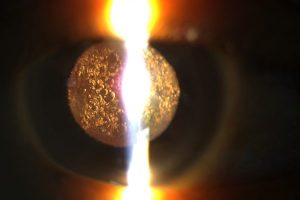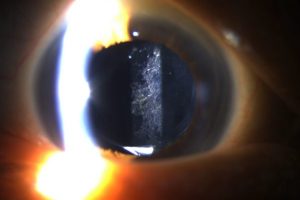Posterior Capsule Opacification
What Are Posterior Capsule Opacification (PCO)?
PCO can occur weeks, months, or years after cataract surgery. Even if cataract surgery for both eyes is done within the same period of time, PCO may develop in each eye at different times.



What Are The Symptoms Of PCO?
PCO is common after cataract surgery. The effects of PCO on vision are very similar to those of cataract. For this reason, it is sometimes called a “secondary cataract” or “after-cataract”.
Some symptoms include:
•Blurred vision
•Decreased vision
•Seeing glares and haloes
•Increased sensitivity to lights
•Loss in contrast sensitivity

What Are The Symptoms Of PCO?
PCO is common after cataract surgery. The effects of PCO on vision are very similar to those of cataract. For this reason, it is sometimes called a “secondary cataract” or “after-cataract”.
Some symptoms include:
- Blurred vision
- Decreased vision
- Seeing glares and haloes
- Increased sensitivity to lights
- Loss in contrast sensitivity

What Causes PCO? Is There Any Way To Avoid It?
PCO is caused by the growth of epithelial lens cells after cataract surgery. which causes the lens capsule to thicken and become slightly opaque.
PCO is very common after cataract, there is currently no known way of avoiding it. However, younger patients, and those with traumatic cataract, diabetes, uveitis, myotonic dystrophy, retinitis pigmentosa are more likely to develop this condition. [1]

What Causes PCO? Is There Any Way To Avoid It?
PCO is caused by the growth of epithelial lens cells after cataract surgery. which causes the lens capsule to thicken and become slightly opaque.
PCO is very common after cataract, there is currently no known way of avoiding it. However, younger patients, and those with traumatic cataract, diabetes, uveitis, myotonic dystrophy, retinitis pigmentosa are more likely to develop this condition. [1]
Posterior Capsule Opacification (PCO) Treatment
PCO is easily treatable through Nd:YAG laser (also called ‘YAG laser’) capsulotomy.
This 15-min treatment has been established as painless, safe and effective. Anaesthetic eye drops are applied before the treatment. A magnifying contact lens may be used. During the treatment, the patients sit at the YAG laser machine, which is set up very similarly to some of the eye test machines used during cataract diagnosis. As the YAG laser delicately vaporizes the PCO, patients will see a few flashes of lights and hear clicking sounds.
Risks and complications of the procedure include brief increase in eye pressure, inflammation, floaters, damage to the intraocular lens, and retinal detachment. However, the incidence of complications is rather low.
A YAG laser treatment is typically only done once – PCO does not return. After the treatment, vision will be blurry for a few days. However, as there are no incisions or stitches during a YAG laser, patients will be able to return to their normal activities immediately after the procedure.
Book a Consultation
Get an eye checkup with us now!
Interested to fix a consult with our eye specialist? Get in touch with us!


